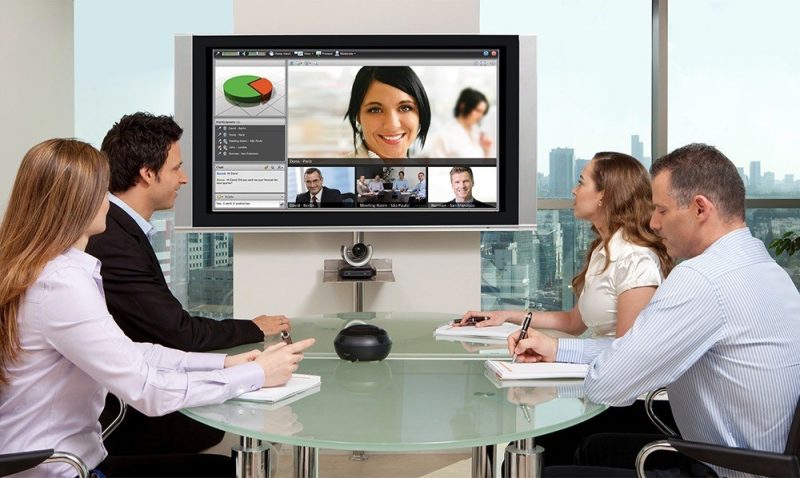The modern business environment demands of every business to be efficient and flexible. Creating a situation where you can have regular meetings and conferences is a difficult prospect. It requires you to have all the participants of the meeting at one place, have a large enough place for them to work and conferences. If travel is involved for participants arriving from a great distance, then the company usually has to cover the costs, which can all add up. So, the easier solution is to let the participants work closer to where they will be their maximum efficiency and have virtual meetings where the participants can join in from wherever they are. Modern video teleconferencing systems have made it much simpler. So let’s take a look at the basic components of a video teleconferencing system and see how it works.
 The components of a video teleconference
The components of a video teleconference
Basics
Video camera, 1 per participant
Microphone, 1 per participant
Display of any kind, 1 per participant
Audio sources such as a headphone or speakers
Network connection between the participants, typically Internet or LAN
Additional components
Codec, any program or hardware that can encode the video stream into compressed data
Noise reduction, which may be a feature of the microphone or done via the software
Teleconferencing platform, a commercially available video conferencing package suite
How it works
The video is recorded by the camera and sent to the computer. This stream of raw data is then compressed by the codec to break it down into packets to be sent via TCP/IP. After this step the very large size of the raw video stream. The audio is processed in a similar way using an audio codec. The audio and video stream is combined and sent to the teleconferencing platform or service. It takes the data and sends it to all other participants. Once received, the computer decodes the data from all other participants and displays them on the screen and plays the associated audio. This process occurs with very little lag and hence it is quite possible to have a meeting from across the world. The Internet is most commonly used for conferences, through LAN or company-wide WAN may sometimes be used.

